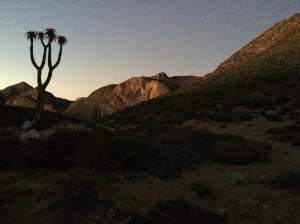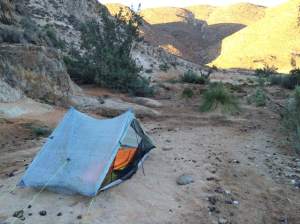 What I learnt from four days of lightweight backpacking or fastpacking:
What I learnt from four days of lightweight backpacking or fastpacking:
- I have over 20 years experience in carrying very heavy loads (mainly climbing gear) up very remote peaks. This is quite a different skill set to Ultra Light travel to which I am far less experienced.
- The Osprey Talon 22 is perfectly adequate to carry all your kit for and adventure of this nature. It is a great pack if you plan to mainly walk. For more of a running approach a specific running pack will work better (Osprey Rev Series, Montane Dragon 20, Ultimate Direction Fastpack 20L etc)
- Navigation: My partner had printed out a map and drawn a GPS route from google earth on his Garmin Fenix. I used 1: 50 000 standard maps and carried a compass. They were heavier but the combination worked well in that we could confirm the identity far away peaks. I also carried a GPS with pre loaded waypoints. Pre loading GPS points of important junctions was hugely beneficial in making sure we stayed on track. The combination worked well. I never used the compass so with hindsight I could have left it behind.
- Gear I carried and did not use: I would still carry it and not leave anything out.
Frist Aid Kit, fleece gloves, spare matches, Waterproof jacket, Windproof Shell (I am undecided on whether I would take this for this particular trip. Normally this is one of my essentials but with day time temps being up to 30°C most days I am not sure which probably means that I could have left it behind.)
- Gear I carried and did not need:
Compass (see above),
Opinel knife. I could have substituted for a simple scalpel blade instead.
Extra stove and fuel. It only weights about 270g combined but every bit helps. We used a methalated spirits home made stove and carried about 250ml of fuel in a juice bottle. See the instructions of how to make it here. Before all you MSR and Jetboil lovers knock this try it!
- Items that turned out to be essential: needle and thread. My partner’s bag tore as we were about to start. Without this repair possibility he would have had a very uncomfortable trip.
- Items that I wish I had changed:
We carried 3L of water per day per person. This was perfect for the conditions. I had a 2,5L bladder and my partner had a selection of 500ml bottles. He could quite easily pace his drinking with this system whereas I was playing a bit of guess work. Essential to his system was having easy and on the go access to all bottles. Big mesh pockets on his bag made this work. I had a 500ml water bottle which I intended to use with 32Gi Recover shake or Nutriboost meal replacement first thing and last thing in the day. These two drinks worked really well at the end of the day to fill me up before we got to dinner. But having only one bottle meant that I was limited to having this last thing in the day when I knew we would not run out of water. I would probably choose a bottle system in future. It does not put all your vital water into one potentially vulnerable container and is easier to measure your consumption on the go. You would need a bag that can carry two bottles up front and two bottles, easily accessible on each side.
 I bought a 9°C (Comfort Rating) Mountain Equipment Helium Solo Sleeping bag. Temperatures were not lower that 12-14°C any one night. I wore running tights, First Ascent DermaTec base layer as a top and Rab Polartec Alpha over that and a Reversible Polar Buff as headwear.
I bought a 9°C (Comfort Rating) Mountain Equipment Helium Solo Sleeping bag. Temperatures were not lower that 12-14°C any one night. I wore running tights, First Ascent DermaTec base layer as a top and Rab Polartec Alpha over that and a Reversible Polar Buff as headwear.
I should have tested this combination at a known temperature to know how cold I would be. Instead I made the classic mistake of trusting “tested numbers” not taking into account personal variance.
- Specificity is key in training. My best training session was a 6h 24km walk with a heavy pack. I knew I was undertrained going into this venture but I only managed to do what I could without getting too fatigued. I will emphasise this more in future.
- My emphasis needs to mainly be on capabilities rather than my gear. I need to work on being more comfortable enduring the cold (necessitating less gear). I was never uncomfortable as such but you can always be better. I need to put more emphasis on fitness. I need to improve my navigation and my competency with using a GPS. I believe my skills are above average but you can never be too good in this department. When you really need to navigate under pressure then experience counts!
- Nutrition for every day: breakfast: cooked porridge of two handfuls of rolled oats with some cinnamon and seeds mixed in.
snacks: 2 bars (selection of Ziberto Energy Bars, 32Gi, Trek Bar) Trek Bar offers best kj value for weight.
1 stick droe wors (about 80g)
100g mixed nuts
80g dried fruit mix
1 scoop Nutriboost
1 serving 32Gi Recover
Lunch: left over serving of dinner
Dinner: 50g dehydrated food. Required about 1h of soaking and then bringing to boil.
Ate all my snacks on day 1 but after that I felt I was less and less hungry. Is this fat burning setting in? My body becoming more efficient? I could have certainly have done without one serving of either Nutriboost or Recover and possibly left another of the above behind also.
- The Big Three need the most attention for weight savings: Shelter, Sleeping Bag/Matt, Pack.
We had the z-packs duplex which was brilliant. The reason we decided on a closed tent rather than tarp only is that all the literature warns of creepy crawlies in the form of scorpions and spiders. Not being a friend of either this was a good compromise to make sure we limited exposure. We both used Thermarest Neoair mattresses which were awesome in that they are compact.
- I carried a Petzl Myo which ended up being overkill BUT if we had to have travelled at night then this would have been a deal breaker. Glad I brought it.
- My partner in crime was way more experienced than me. I have learnt a great deal and hope to explore more. The choice of partner is key in ventures like this. We worked well and for this I am very pleased and thankful.

Nice article – sounds like it was a good trip.
I think the following article should be added as a fantastic reference: http://www.irunfar.com/2014/12/the-definitive-guide-to-fastpacking.html
Glueless bicycle tube patches should be carried for fixing neoair mattresses and water bladders
For those interested here is another useful link: http://thebigoutside.com/the-simple-equation-of-ultralight-backpacking-less-weight-more-fun/